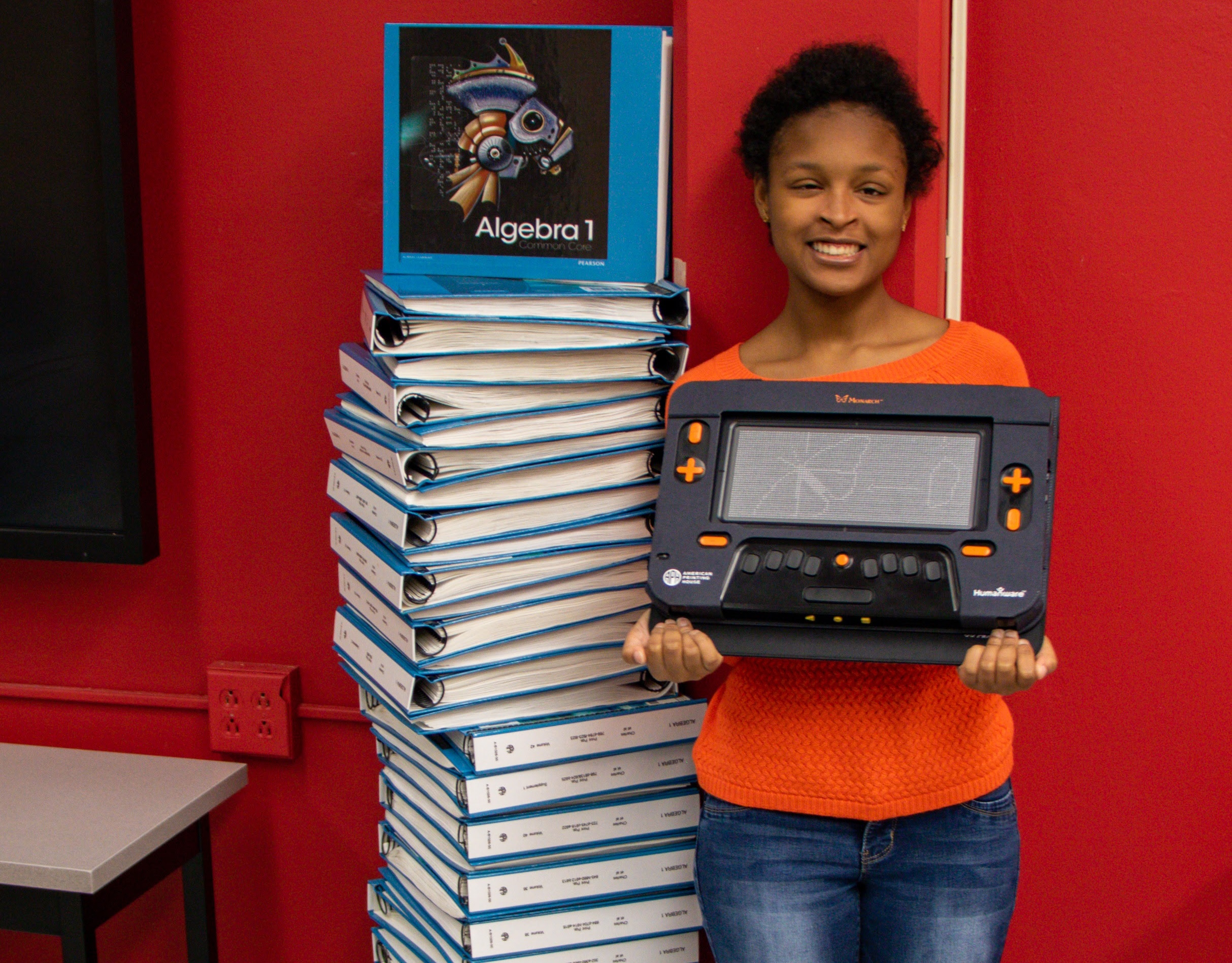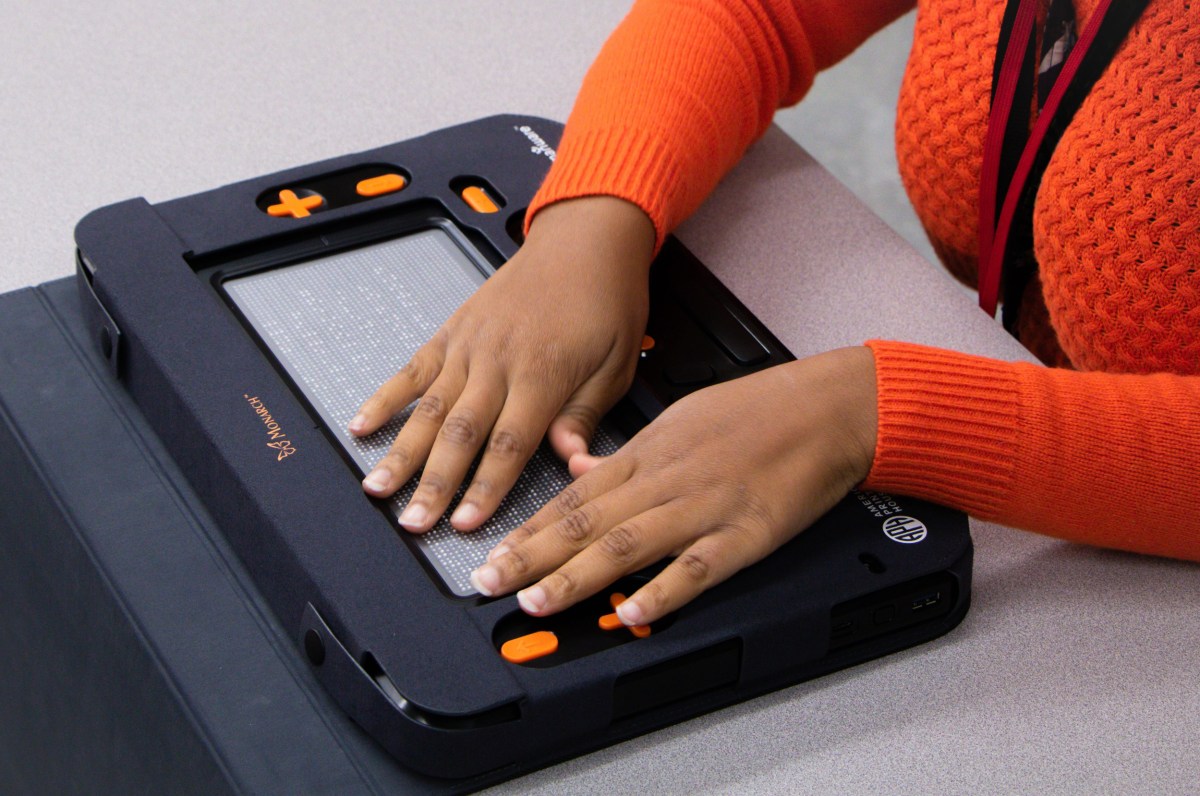Products You May Like
For many people around the world, braille is their primary language for reading books and articles, and digital braille readers are an important part of that. The newest and fanciest yet is the Monarch, a multipurpose device that uses the startup Dot’s tactile display technology.
The Monarch is a collaboration between HumanWare and the American Printing House for the Blind. APH is an advocacy, education, and development organization focused on the needs of visually impaired people, and this won’t be their first braille device — but it is definitely the most capable by far.
Called the Dynamic Tactile Device until it received its regal moniker at the CSUN Assistive Technology Conference happening this week in Anaheim. I’ve been awaiting this device for a few months, having learned about it from APH’s Greg Stilson when I interviewed him for Sight Tech Global.
The device began development as a way to adapt the new braille pin (i.e. the raised dots that make up its letters) mechanism created by Dot, a startup I covered last year. Refreshable braille displays have existed for many years, but they’ve been plagued by high costs, low durability, and slow refresh rates. Dot’s new mechanism allowed for closely-placed, individually replaceable, easily and quickly raisable pins at a reasonable cost.
APH partnered with HumanWare to adopt this new tech into a large-scale braille reader and writer code-named the Dynamic Tactile Device, and now known as Monarch.
These days one of the biggest holdups in the braille reading community is length and complexity of the publishing process. A new book, particularly a long textbook, may need weeks or months after being published for sighted readers before it is available in braille — if it is made available at all. And of course once it is printed, it is many times the size or the original, because braille has a lower information density than ordinary type.

A woman holds a Monarch braille reader next to a stack of binders making up an “Algebra 1” textbook.
“To accomplish the digital delivery of textbook files, we have partnered with over 30 international organizations, and the DAISY Consortium, to create a new electronic braille standard, called the eBRF,” explained an APH representative in an email. “This will provide additional functionality to Monarch users including the ability to jump page to page (with page numbers matching the print book pages numbers), and the ability for tactile graphics directly into the book file, allowing the text and graphics to display seamlessly on the page.”
The graphic capability is a serious leap forward. A lot of previous braille readers were only one or two lines, so the Monarch having 10 lines of 32 cells each allows for reading the device more like a person would a printed (or rather embossed) braille page. And because the grid of pins is continuous, it can also — as Dot’s reference device showed — display simple graphics.
Of course the fidelity is limited, but it’s huge to be able to pull up a visual on demand of a graph, animal, or especially in early learning, a letter or number shape.
Now, you may look at the Monarch and think, “wow, that thing is big!” And it is pretty big — but tools for people with vision impairments must be used and navigated without the benefit of sight, and in this case also by people of many ages, capabilities, and needs. If you think of it more like a rugged laptop than an e-reader, the size makes a lot more sense.
There are a few other devices out there with continuous pin grids (a reader pointed out the Graphiti), but it’s as much about the formats and software as it is about the hardware, so let’s hope everyone gets brought in on this big step forward in accessibility.
